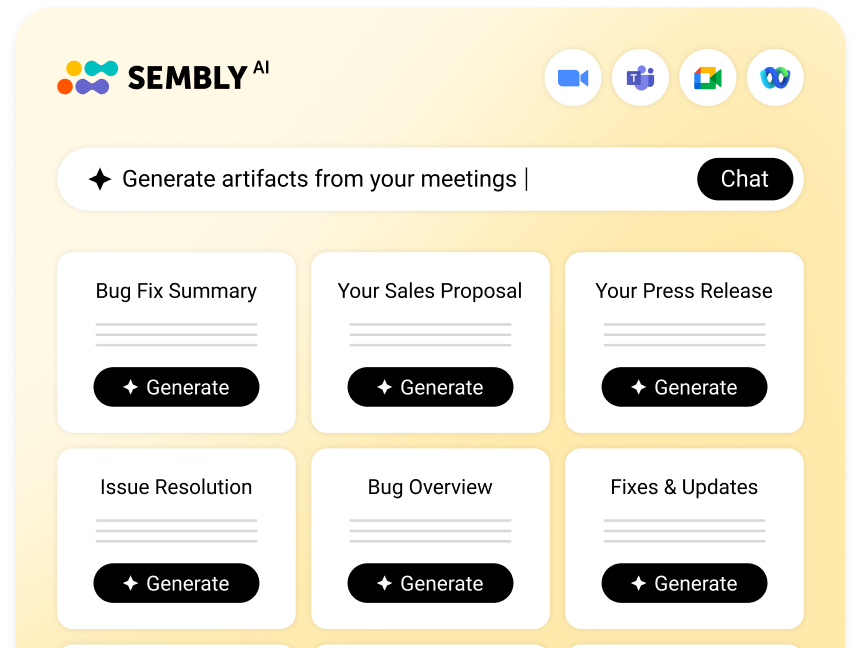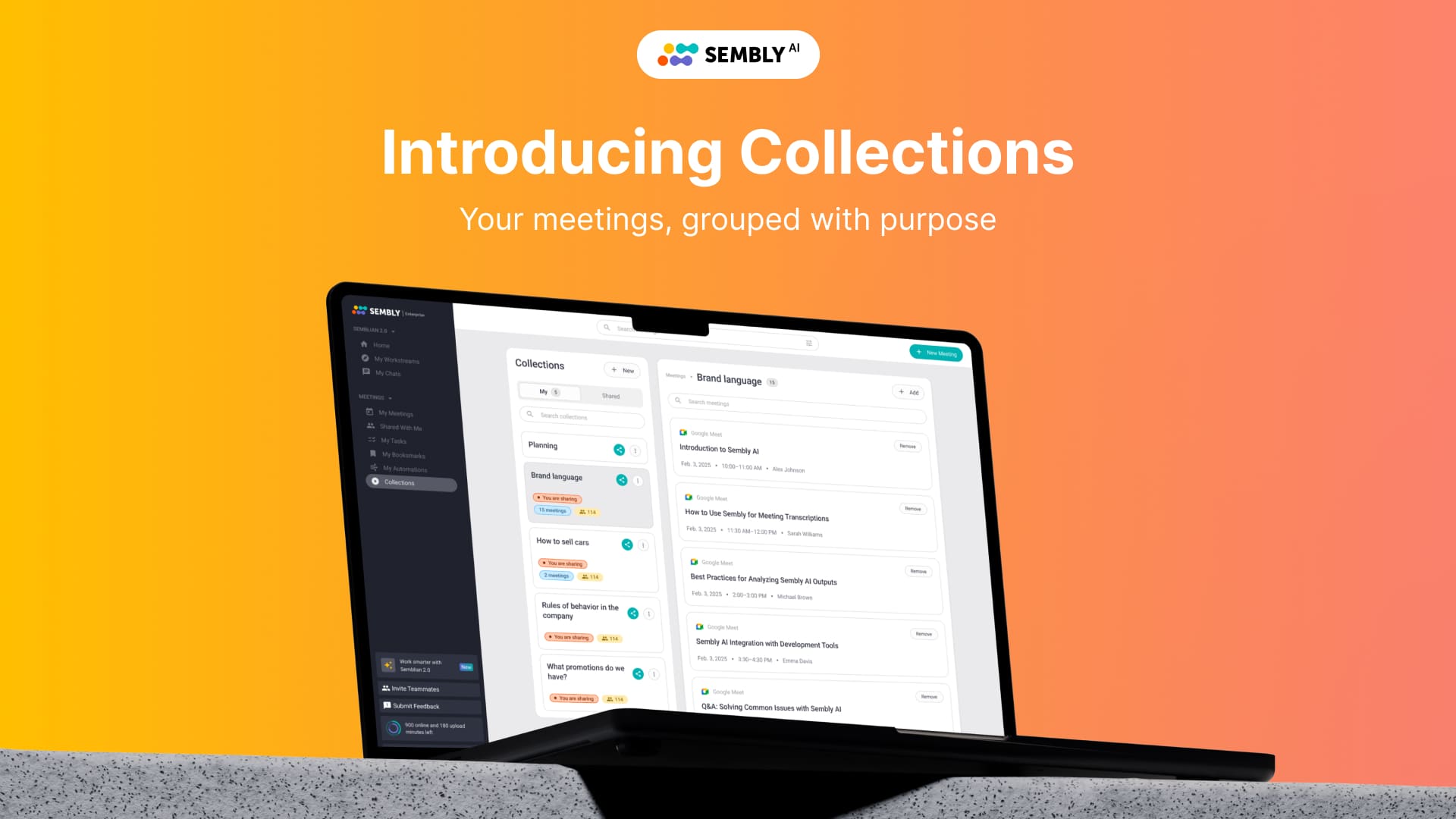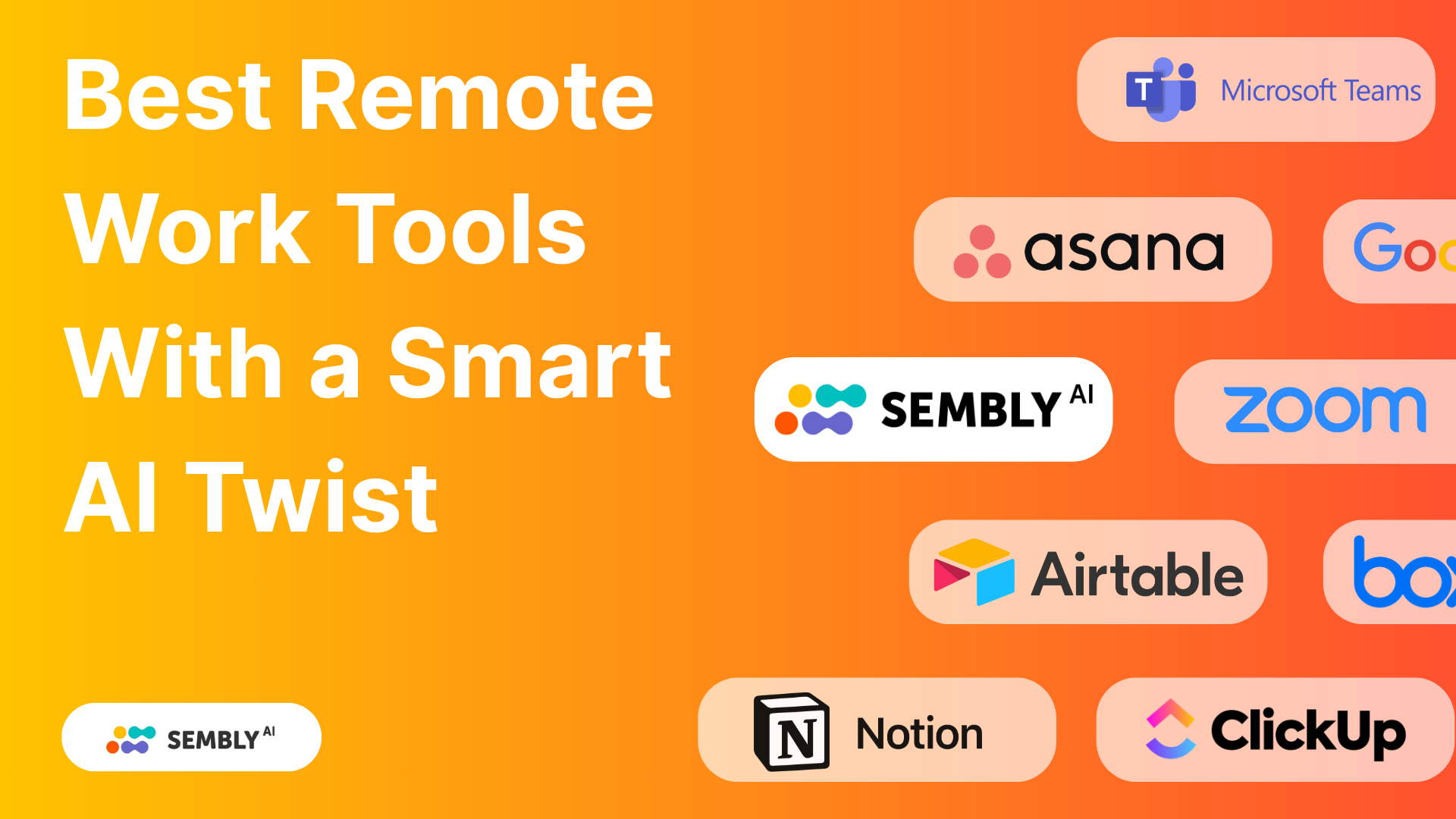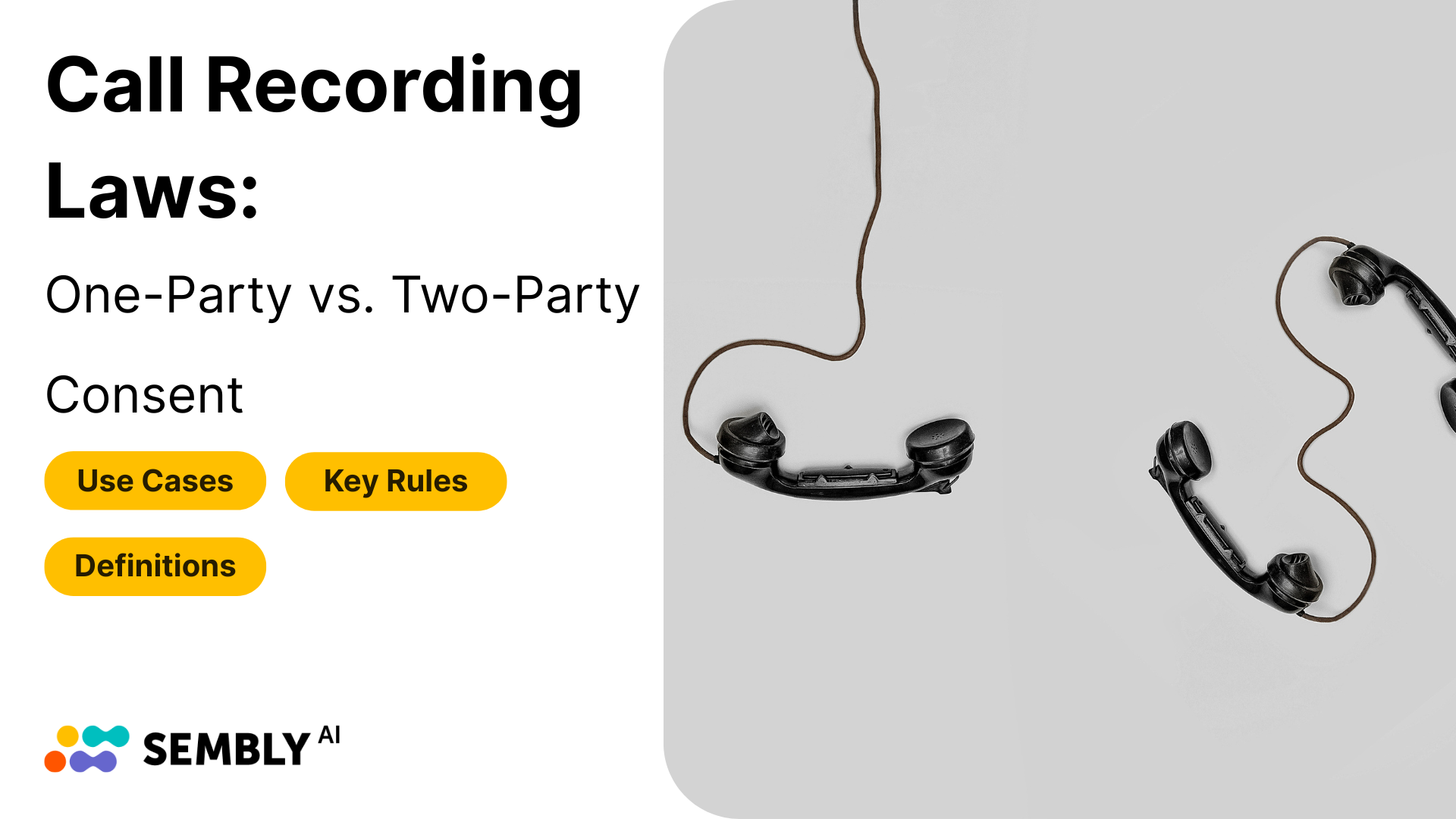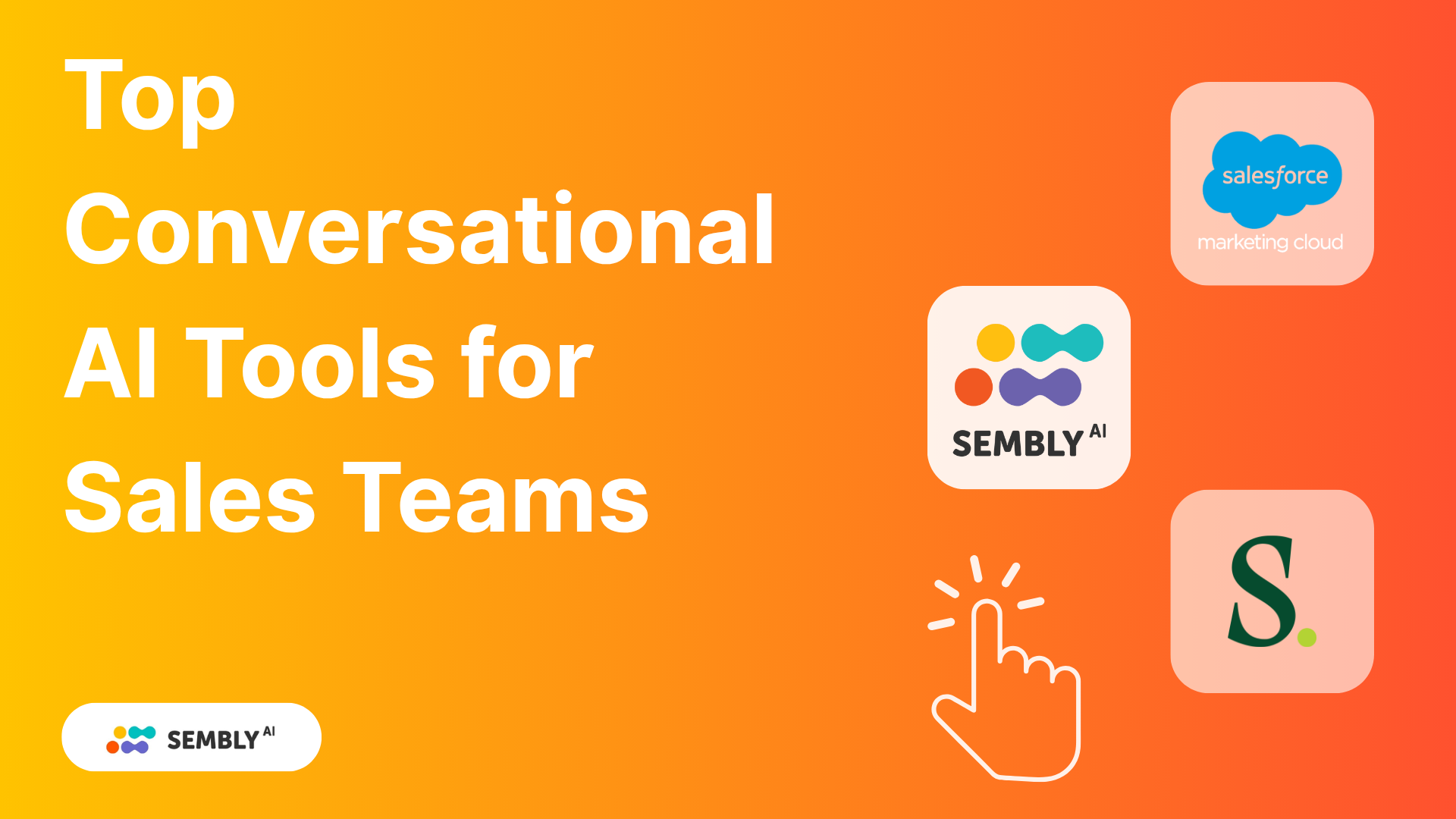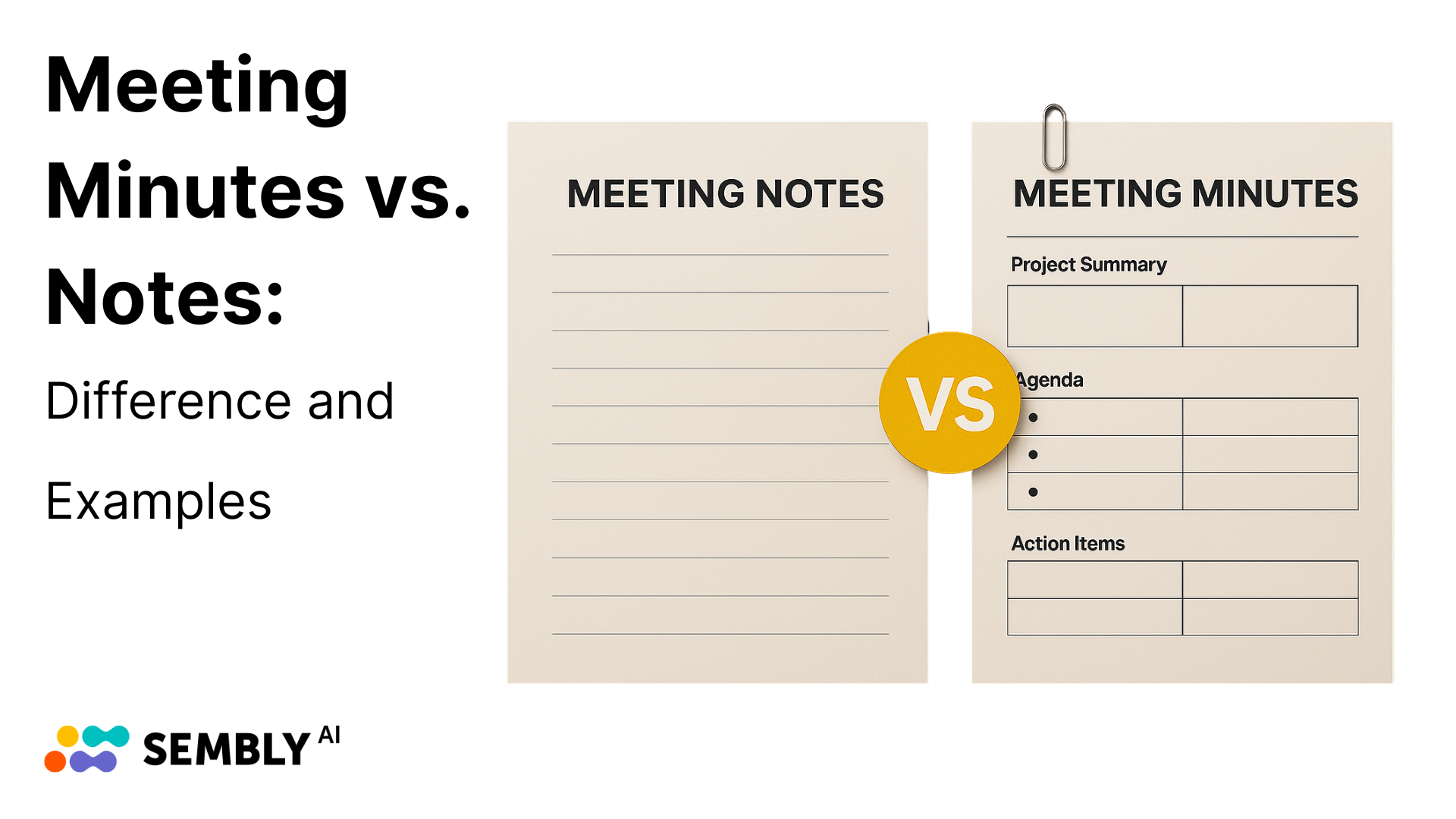Recently updated on January 24th, 2023
We focus this article on trends and predictions because they provide insights and inspiration to unlock innovative thinking, build trust, and can provide ideas for creating competitive advantage for the digital journey that lays ahead.
In the global arena of enterprise technology, optimism rules the roost. We are enthralled by innovation and the opportunity-laden disruption that follows that we have developed an abiding faith in technological progress.
By collecting different trends from trusted sources, the Sembly AI Team offers a framework for thinking strategically about technology possibilities that currently appear distant in the horizon.
Let’s start by looking at Accenture Fjord Trends 2022,
called “The new fabric of life”.
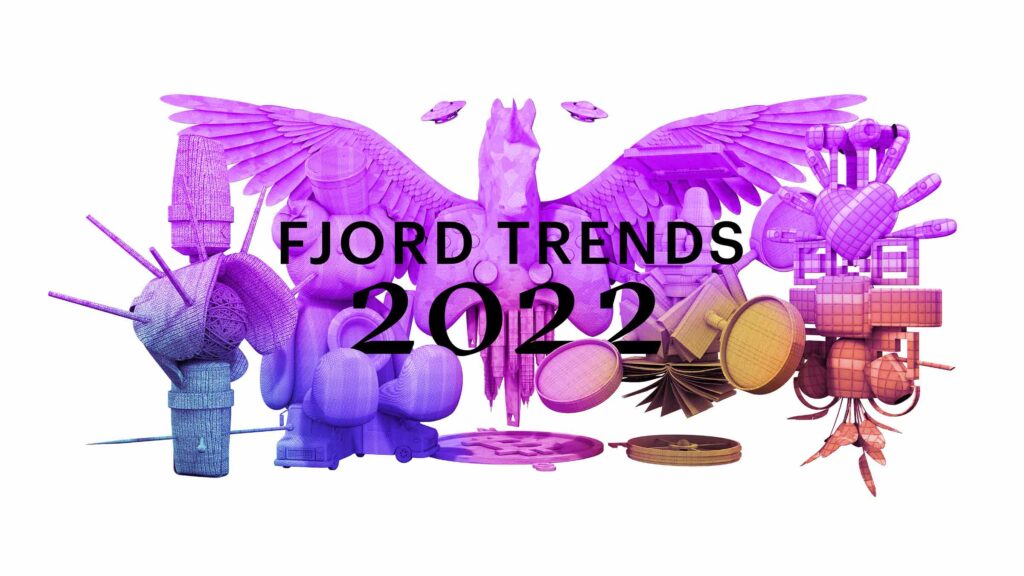

In the United States, people make an average of US$10,972 a year from side-hustles like teaching, writing blogs and newsletters, renting out their homes, freelance programming and more. Employers now face an important leadership challenge, which is to take a look at the employee value proposition, with today’s context in mind:
- The benefits package: Having already adjusted perks for the digital world, employers will continue to assess their suitability for a flexible and remote workforce.
- A collective effort: Work culture needs a booster shot of “we,” and businesses may need to work hard to ensure that employees understand their responsibility to — and the benefits of — the collective.
- A differentiated experience: Work has become more transactional thanks to the rise of tech tools, so companies must adjust the balance of the employee experience to be about more than just task productivity.
The Rise of Individualism
People are fundamentally thinking differently about their sense of agency over their own lives, supported by new opportunities like the side-hustle economy.
The rise in individualism and independence has major implications for organizations, relationships with employees and consumer-creators.
Businesses should keep this in mind when defining their value proposition to attract and retain employees.
Anticipate the trend outcomes
Reflect on the rise in self-agency and “me vs we” mentality, and the implications for your organization – how will you attract and retain talent and customers in this new context?
Get creative about how your company’s value proposition can evolve to accommodate for people with multiple sources of income.
Act on any weak spots within your organization to ensure your employees don’t walk away.
The end of abundance?
Those who have been able to rely on the availability and convenience of the things they want are having to think again.
Scarcity, shortages, distribution delays, austerity laws and sustainability factors are driving forward the nature-positive movement and a more measured approach to consumption.
Anticipate the trend outcomes
Contemplate what this supply chain disruption means for your business, and your customers. Can you create new business models by extending existing product life?
Establish your sustainability roadmap to get your business and your customers to net neutral — and, further, to nature positive.

Expanding beyond its gaming roots, for some, the metaverse is becoming a new place to make money. The “creator economy” is growing to encompass future metaverse employment: creators will make assets; performers will create real-time content; bridgers will connect the physical to the digital world; participants will learn, explore and enhance; builders will design and organize experiences; the community will help, attract and engage
The metaverse gained huge traction during the pandemic. What we cannot
The metaverse gained huge traction during the pandemic. What we cannot know yet is how its evolution will proceed. It may continue to boom and grow, it may transform, or it may fizzle unless enough people find continued value.
We may well be on the brink of a new cultural epoch. If this is true, this shift will be associated with the metaverse. Whatever happens, the metaverse may offer infinite potential as a brave new space for companies to explore, test, and innovate, all of which makes it — to say the very least — tremendously exciting.
The next frontier
The metaverse is showing promise beyond its gaming roots to offer people and brands a new place to interact, create, consume and earn. Its true potential is yet to be seen, but it has the makings of a new cultural evolution. Finding success here will rely on brands’ understanding of their customers in this new world.
Anticipate the trend outcomes
Consider your product in the metaverse — how it’s seen, how it’s purchased, where it goes, how it’s used by your metaverse customers.
The lifecycle of your product, brand, and experiences requires a complete mindset shift. The metaverse is a place and not just another channel.

It’s been 24 years since Google was founded, and one of its most profound effects is how it has evolved our relationship with questions. Having them answered at the touch of a button (or brief exchange with a voice assistant) is so embedded in our lives that it’s an expectation we barely think about. And it’s led us to ask even more questions.
The conversation is a natural part of the human experience — it’s how we share and find out information, how we frame who we are, and how we grow and learn. We believe brand conversations with their customers might evolve and be used to structurally solve the challenge of providing the right answer at the right time.
Already, conversational Artificial Intelligence (AI) powers an array of basic question-and-answer services, but approaches will likely evolve both in ambition and sophistication.
This much is true
Asking questions and having them answered immediately has become part of everyday life, but people are increasingly doubting the answers they get. Combined with the proliferation of channels and sources, this is a design and business challenge. Those who meet it will earn trust and competitive edge.
Anticipate the trend outcomes
Research the types of questions customers are now asking in — and of — your industry. Outside of your sales channels, consider where people go to get information about your company or products, and how you can create information layers that diminish the need to go there.
Handle with care
The desire to care is a fundamentally human trait, but it’s now more visible, valued and openly discussed. Regardless of their connection with health, organizations must now define how they embed care into their practices and offerings — for employees, customers and wider society.
Anticipate the trend outcomes
Treat care as both formal and informal. Acknowledge that care is important, emotionally taxing work. Consider how you can develop products and services — and the KPIs related to them — around the needs of people who have care as part of their daily work.
Next is Deloitte Tech Trends 2022
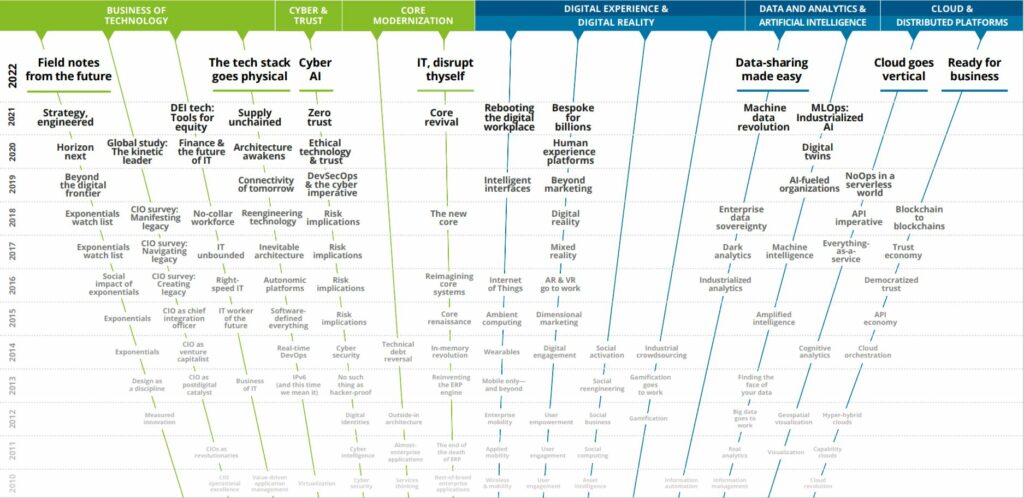
The promise of new business models and opportunities for 2022
AI models are often considered highly sensitive forms of intellectual property. Because they can typically fit on a thumb drive, they also represent high security risks, so many organizations have traditionally performed their own modeling in-house.
Thanks to encryption technologies, this may be about to change. With modeling data secured, chief data officers can safely outsource AI modeling and training to third parties.
Though currently in an early stage, this data-sharing trend is picking up steam. In a recent survey, Forrester Research found that more than 70% of global data and analytics decision-makers are expanding their ability to use external data, and another 17% plan to do so within the next 12 months
Moreover, the global FHE market alone is growing at an annual rate of 7.5% and is expected to reach US$437 million in value by 2028. Currently, the health care and finance sectors are leading most FHE explorations.
As the global economy moves from a pandemic footing to a more future-focused endemic one, many organizations are looking for opportunities to become more nimble and efficient by offloading business processes to the cloud. The value of the industry cloud market could reach US$640 billion within the next five years.
Gartner predicts that by 2023, organizations that promote data-sharing will outperform their peers in most business metrics.
Data-sharing made easy
New technologies give rise to innovative business models and products by simplifying the mechanics of data-sharing across and between organizations — all while preserving the veil of privacy.
Cloud goes vertical
Cloud and software vendors now offer vertical-specific solutions that modernize legacy processes and jump-start innovation. Deploying them is a process of assembly, thus freeing organizations to focus resources on competitive differentiation.
Blockchain: Ready for business
Blockchain and other distributed ledger technology platforms are fundamentally changing the nature of doing business across organizational boundaries and helping many companies reimagine how they make and manage tangible and digital assets.
Cyber AI: Real defense
As organizations struggle with security breaches, cyber AI can be a force multiplier, enabling security teams not only to respond faster than cyber attackers can move but also to anticipate these moves and act in advance.
Edge AI trends NVIDIA expects to see in 2022
The development of AI has consisted of several waves, as pictured above.
Democratization of AI is underway, with new tools and solutions making it a reality. Edge AI, powered by huge growth in IoT and availability of 5G, is the next wave to break.
In 2022, more enterprises will move their AI inference to the edge, bolstering ecosystem growth as the industry looks at how to extend from cloud to the edge.
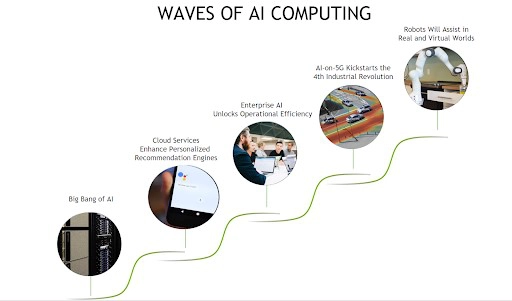
By analysts: Thomas Bittman, Bob Gill, Tim Zimmerman, Ted Friedman, Neil MacDonald, Karen Brown. Source: NVIDIA Blog
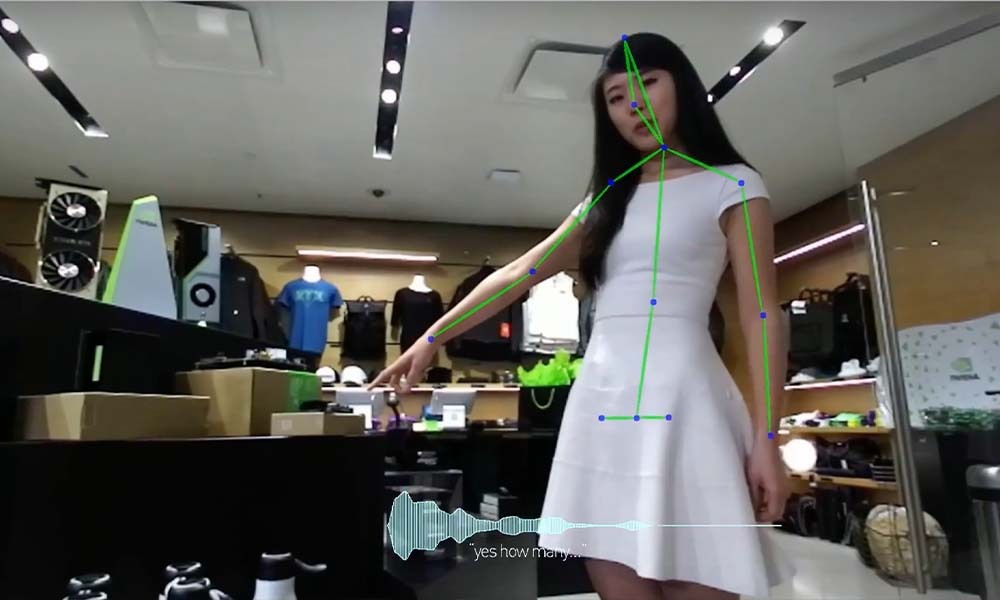
Source: NVIDIA Blog
Edge Management Becomes an IT Focus
While edge computing is rapidly becoming a must-have for many businesses, deployments remain in the early stages.
To move to production, edge AI management will become the responsibility of IT departments. In a recent report, Gartner wrote, “Edge solutions have historically been managed by the line of business, but the responsibility is shifting to IT, and organizations are utilizing IT resources to optimize cost.”
To address the edge computing challenges related to manageability, security and scale, IT departments will turn to cloud-native technology. Kubernetes, a platform for containerized microservices, has emerged as the leading tool for managing edge AI applications on a massive scale.
Expansion of AI Use Cases at the Edge: Real defense
Combined with data storage, processing technologies, and input/output or sensor capabilities, multimodal AI can yield real-time performance at the edge for an expansion of use cases in robotics, healthcare, hyper-personalized advertising, cashier-less shopping, concierge experiences and more.
Imagine shopping with a virtual assistant. With traditional AI, an avatar might see what you pick up off a shelf, and a speech assistant might hear what you order.
By combining both data sources, a multimodal AI-based avatar can hear your order, provide a response, see your reaction, and provide further responses based on it. This complementary information allows the AI to deliver a better, more interactive customer experience.
Convergence of AI and Industrial IoT Solutions
The intelligent factory is another space being driven by new edge AI applications. According to the same Gartner report, “By 2027, machine learning in the form of deep learning will be included in over 65 percent of edge use cases, up from less than 10 percent in 2021.”
Hence, expect more partnerships between AI and traditional IoT management platforms that simplify the adoption of edge AI in industrial environments.
AI Lifecycle Management From Cloud to Edge
For organizations deploying edge AI, MLOps will become key to helping drive the flow of data to and from the edge. Ingesting new, interesting data or insights from the edge, retraining models, testing applications and then redeploying those to the edge improves model accuracy and results.
With traditional software, updates may happen on a quarterly or annual basis, but AI gains significantly from a continuous cycle of updates.
- Language AI will take center stage, with more startups getting funded in NLP than in any other category of AI.
- Enterprises will stop shipping AI blind

